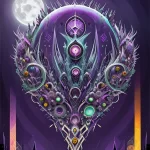Non-fungible tokens (NFTs) have taken the world by storm in recent years, captivating the imagination of investors, collectors, and artists alike. These unique digital assets have been touted as the future of ownership and authenticity, promising to revolutionize the way we interact with digital goods and experiences. However, amidst the hype and fanfare, questions have arisen about the true value and longevity of NFTs. Are they simply a passing fad or a transformative technology with the potential to reshape the digital landscape?
The Rise and Fall of the NFT Hype Cycle
The NFT phenomenon exploded in popularity in 2021, driven by a combination of factors, including increasing media coverage, the emergence of successful NFT projects, and a general buzz around blockchain technology. The market capitalization of NFTs reached an all-time high of over $40 billion in August 2021, fueled by high-profile sales of digital art and collectibles.
However, this meteoric rise was followed by a sharp correction, with the NFT market experiencing a significant downturn in 2022. Trading volumes plummeted, prices of popular NFT collections collapsed, and the overall enthusiasm for NFTs seemed to dissipate. This decline has led some to question whether NFTs are a dead technology, destined to fade into obscurity.
Signs of Life Amidst the Downturn
Despite the current market slump, there are also signs that NFTs are not entirely dead. Several promising developments suggest that the technology may have a more enduring future than some might believe.
Table of Contents
Diversification of NFT Applications:
The initial focus on NFTs for digital art and collectibles has expanded to include a wider range of applications, including gaming, fashion, ticketing, and even real-world asset ownership. This diversification is helping to broaden the appeal of NFTs and attract new users and potential investors.
Growth of the Creator Economy:
NFTs are empowering creators to connect directly with their audiences and monetize their work in new ways. This has led to a surge in NFT projects from independent artists, musicians, and designers, further expanding the ecosystem and driving innovation.
Increased Adoption by Established Institutions:
Major brands and companies are increasingly exploring the potential of NFTs. Some are launching their own NFT collections, while others are integrating NFT technology into their products and services. This growing adoption by established players suggests that NFTs are gaining mainstream recognition and acceptance.
Challenges and Considerations for the Future of NFTs
Despite these promising developments, there are still significant challenges that need to be addressed for NFTs to achieve widespread adoption and long-term success.
Environmental Impact:
The energy consumption associated with some blockchain networks, particularly Ethereum, has raised concerns about the environmental sustainability of NFTs. This has led to the development of more energy-efficient blockchains and initiatives to reduce the environmental footprint of NFT transactions.
Regulatory Uncertainty:
The legal and regulatory landscape surrounding NFTs remains in flux, with varying interpretations and jurisdictions. This uncertainty can hinder adoption and create challenges for businesses and investors.
Consumer Education and Awareness:
The complexity of NFTs and the risks associated with investing in them can deter potential users. More education and awareness are needed to help people understand the technology and make informed decisions.
Conclusion: A Promising Future with Challenges to Overcome
NFTs are a disruptive technology with the potential to transform the way we interact with digital goods and experiences. They offer a unique solution for creating and managing digital scarcity, authenticity, and ownership. However, the current market downturn and the challenges mentioned above highlight the need for further development, innovation, and regulatory clarity.
While it is too early to say definitively whether NFTs are dead, the signs suggest that the technology is not going away anytime soon. The continued innovation, expansion of applications, and adoption by established players suggest that NFTs have the potential to play a significant role in the future of the digital economy. However, overcoming the challenges of environmental impact, regulation, and consumer education will be crucial for NFTs to achieve their full potential and gain widespread acceptance.







